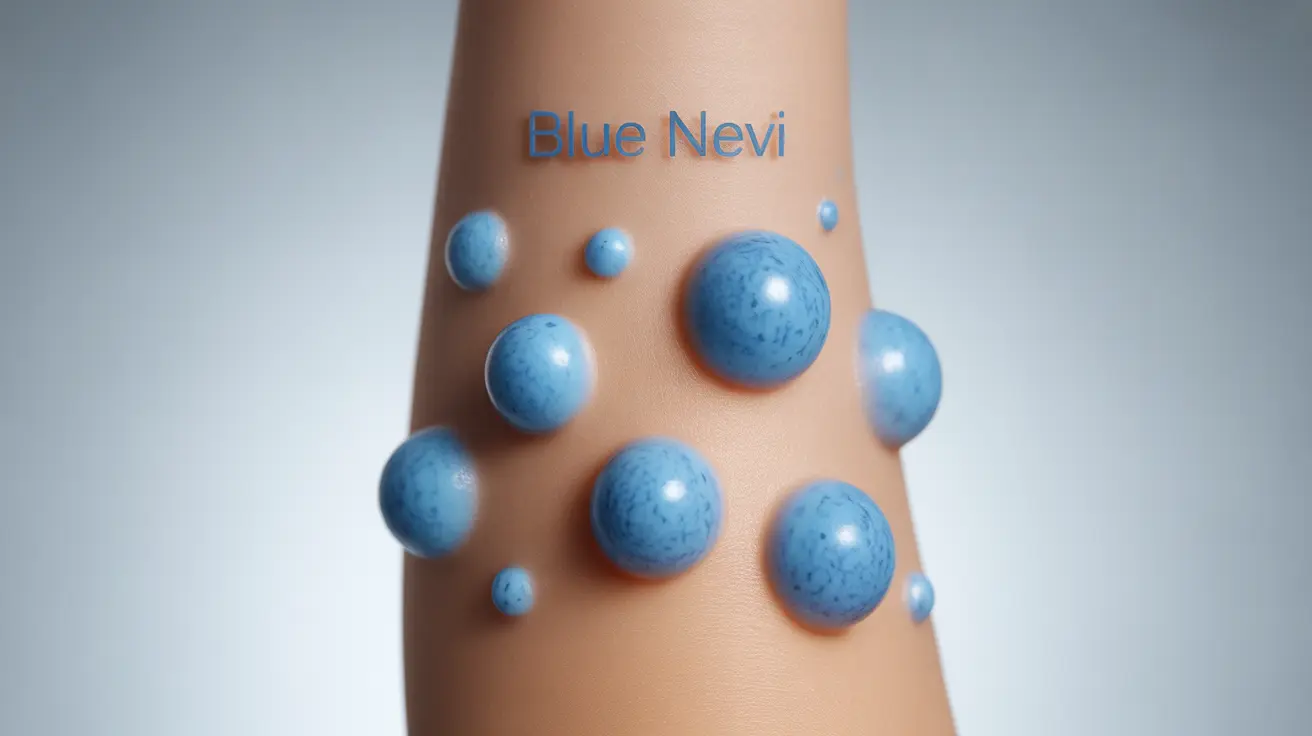Discovering a blue spot on your skin can be concerning, especially when you're unsure whether it's harmless or potentially dangerous. These distinctive blue-colored lesions, medically known as blue nevi, require careful attention and understanding to ensure proper identification and treatment when necessary.
Understanding the characteristics and potential risks of blue spots on the skin is crucial for early detection of any concerning changes. While most blue nevi are benign, knowing when to seek medical attention can make a significant difference in outcomes if the lesion shows suspicious changes.
Understanding Blue Spots on the Skin
Blue spots on the skin typically appear as smooth, raised or flat lesions with a blue to blue-gray coloration. These marks occur when melanin-producing cells cluster deeply within the skin, creating their characteristic blue appearance due to an optical effect known as the Tyndall effect.
These lesions commonly develop during childhood or adolescence, though they can appear at any age. Most remain stable throughout a person's life without causing any health concerns.
Common Locations and Characteristics
Blue nevi typically appear in specific areas of the body, including:
- Face and scalp
- Hands and feet
- Back and buttocks
- Arms and legs
The appearance can vary slightly, but most share these common characteristics:
- Round or oval shape
- Smooth surface
- Uniform coloration
- Size typically under 1 centimeter
- Well-defined borders
Warning Signs and Risk Factors
While most blue spots on the skin are harmless, certain changes or characteristics may indicate a need for medical evaluation:
- Sudden growth or expansion
- Changes in color or irregular pigmentation
- Development of irregular borders
- Bleeding or ulceration
- Pain or tenderness
- Associated symptoms like itching
Diagnosis and Evaluation
Healthcare providers use several methods to evaluate blue spots on the skin:
- Dermoscopy examination
- Physical examination
- Patient history review
- Photographic documentation
- Biopsy when necessary
Treatment Options
The approach to treating blue spots on the skin depends on several factors:
- Whether the lesion is benign or suspicious
- Location and size of the spot
- Patient preferences and concerns
- Impact on quality of life
Treatment options may include:
- Regular monitoring for benign lesions
- Surgical excision for suspicious lesions
- Laser therapy in select cases
- Complete removal for cosmetic reasons
Frequently Asked Questions
What are the typical signs of a blue spot on the skin turning into melanoma?
Key warning signs include rapid growth, irregular borders, color changes, bleeding, ulceration, or any significant change in appearance. The ABCDE rule (Asymmetry, Border irregularity, Color variation, Diameter increase, Evolution) applies to monitoring these lesions.
How do you determine if a blue nevus is benign or malignant?
Medical professionals evaluate the lesion's appearance, history, and characteristics through physical examination and dermoscopy. If there are concerning features, a biopsy may be performed for definitive diagnosis.
What are the common locations where blue nevi usually appear on the body?
Blue nevi most commonly appear on the face, scalp, hands, feet, back, and buttocks. They can develop anywhere on the body but show preference for these locations.
Can a blue nevus ever be a sign of a larger health issue or genetic condition?
While most blue nevi are isolated findings, multiple blue nevi can sometimes be associated with certain genetic syndromes or conditions. Consultation with a healthcare provider is recommended if there are multiple lesions or other concerning symptoms.
What are the treatment options for a blue nevus if it is suspected to be malignant?
If malignancy is suspected, the primary treatment is complete surgical excision with appropriate margins. Follow-up care may include regular skin examinations and imaging studies to monitor for recurrence or spread.




